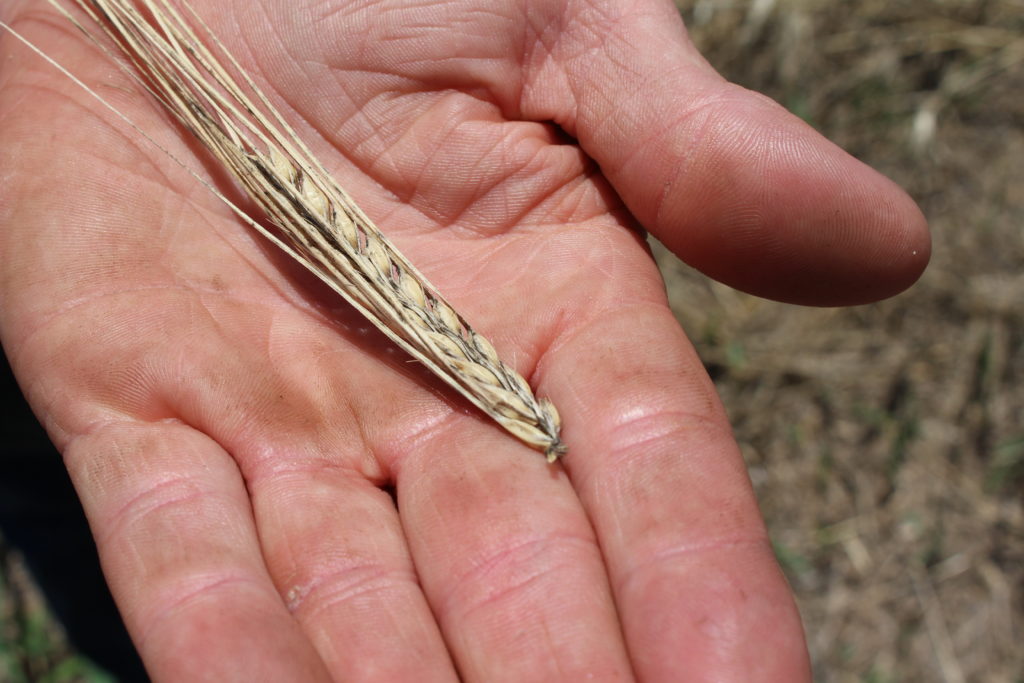Farm & Ranch
All about the Tiny Bits of Barley

By Jessica Crabtree
As the summer temperatures of June began to steep, you could find the Fortenberry brothers busy at work hauling hay from the field. The brothers are eighth generation farmers and ranchers, of the progressive kind. With degrees from Texas A&M, the Fortenberrys are constantly looking to elevate their farming practices. Entrepreneurs in their young age, their latest endeavor is barley.
The first year for the Fortenberry is seen as a trial and error year: time to evaluate what worked and what didn’t, in order to move on next year. With barley there are two classes, food consumption grade and feed grade. The brothers are aiming for the food consumption grade in order to malt their barley harvest.
Barley is typically used as a source of fermentable material for beer and certain distilled beverages and as a component of various health foods. You also see it used in soups and stews, in bread among various cultures, as well as in cattle feed. “With this we are still looking for plumpness of the grain and weight of bushel, but we are also after a lower protein percentage. Basically, the lower the quality the better,” Ethan Fortenberry said. Not a normal crop for the North Texas region, barley is typically grown in dryer climates such as in Idaho, Colorado, Wyoming, Wisconsin and in the Dakotas.
The farmers shared they planted their barley in October, very similar to wheat, while those up north plant their barley in February or March as more of a spring crop.”Here [Slidell] we have kind of less than favorable soil with a lot of rock,” Bain Fortenberry said. The two explained other places may add more nitrogen or irrigate to manipulate the crop for more yield, saying, “Target expected return with nitrogen.” With barley used for malting, the ideal protein percentage is 10.5 to 11 percent. However, more than 12 is not acceptable. If protein in the barley tests too high, it is simply sold for feed.
To read more pick up a copy of the August 2017 issue. To subscribe call 940-872-5922.
Farm & Ranch
Hazards of Backyard Poultry

By Barry Whitworth, DVM
Having backyard poultry is a popular agriculture enterprise. According to the United States Department of Agriculture, 0.8 percent of all households in the United States have chickens. People keep chickens for a variety of reasons with table eggs being one of the more common reasons.
Unfortunately, some of these poultry producers are not aware of the hazards that come with keeping poultry because many times they carry pathogens but appear healthy.
Chickens are carriers of several zoonotic diseases. These are diseases that can be passed from animals to humans. According to a recent survey in Pennsylvania, a majority of backyard poultry producers were aware of the dangers of avian influenza. However, this study also revealed that far fewer producers were aware of the risk of possible exposure to Salmonella and Campylobacter.
The lack of knowledge about the hazards of raising poultry likely contributes to the continued issues of Salmonella outbreaks associated with backyard poultry. In 2023, the Centers for Disease Control and Prevention reported 1,072 illnesses of Salmonella linked to backyard poultry, and 272 of those patients required hospitalization. Oklahoma reported 43 individuals with the disease.
To read more, pick up a copy of the April issue of NTFR magazine. To subscribe by mail, call 940-872-5922.
Farm & Ranch
Ag Elsewhere: Wyoming

By Tressa Lawrence
Babies are tucked away in every nook and cranny. Many ranchers across Wyoming have baby animals popping up all over this time of year.
Farm & Ranch
Ag Elsewhere: Montana

By Lindsey Monk
Another load of grain in to keep feeding the calves until the green grass can really start popping.
-

 Country Lifestyles1 year ago
Country Lifestyles1 year agoScott & Stacey Schumacher: A Growth Mindset
-

 Equine7 months ago
Equine7 months agoThe Will to Win
-

 Country Lifestyles7 years ago
Country Lifestyles7 years agoStyle Your Profile – What your style cowboy hat says about you and new trends in 2017
-

 Country Lifestyles4 years ago
Country Lifestyles4 years agoAmber Crawford, Breakaway Roper
-

 HOME7 years ago
HOME7 years agoGrazing North Texas – Wilman Lovegrass
-

 Country Lifestyles7 years ago
Country Lifestyles7 years agoDecember 2016 Profile, Rusty Riddle – The Riddle Way
-

 Country Lifestyles8 years ago
Country Lifestyles8 years agoJune 2016 Profile – The man behind the mic: Bob Tallman
-

 Outdoor9 years ago
Outdoor9 years agoButtercup or Primrose?







